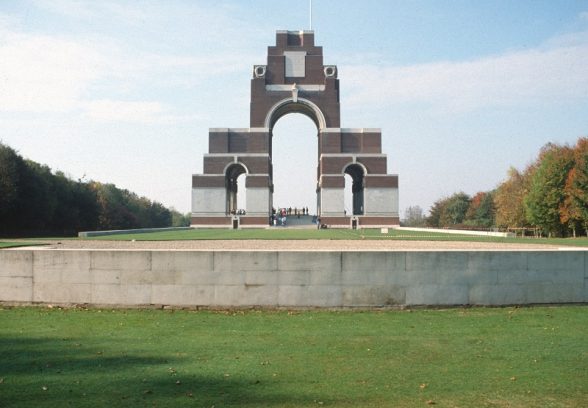This website uses cookies
This website uses cookies to enable it to function properly and to analyse how the website is used. Please click 'Close' to accept and continue using the website.



The commemorative structures that were built as a response to the losses of the First World War featured strongly in our casework in 2014. Heritage Lottery Fund grants and similar schemes have led to the re-evaluation of many memorials and plans to repair and refurbish associated buildings.
I was fortunate to attend the Conservation and Commemoration Study Day organised by the War Memorials Trust and the Society for the Protection of Ancient Buildings in June 2014. One speaker was Gavin Stamp, whose C20 tours to French, Belgian and Italian battlefields are accessible on the war memorials section of our website. Two other speakers who struck a chord with me were Maggie Goodall on the huge variety of architectural responses to commemoration, and Dr Kate Tiller on the hidden memorials to be found in churches.
Almost every settlement in the UK remembered their dead in some way, but I was impressed by the variety of different structures dedicated for this purpose. There are many memorial halls and memorial crosses, but also playing fields and memorial gardens, benches, lych-gates, crosses, obelisks: the list of different types of memorial is extensive. Two recent cases both relate to churches: one relates to small items of commemorative significance, while the other is an entire complex.
Small memorials in parish churches can range from rolls of honour to fittings given as memorials. In a recent case in a church in the Diocese of Peterborough, the memorial for the entire parish was in the form of two altar rails in the chancel. Not all villages erected a memorial outside the church, so such memorials are important to the community as a whole, but their significance can be overlooked. Many of the chancel fittings were also given in memory of individuals. Such memorials are particularly vulnerable when they have been added to a much older church, as in this case: the medieval fabric was considered to be the only part of significance, and the church planned a re-ordering that would remove the locally-made chancel fittings. They also proposed fixing the plaque from the removed altar rails to the wall; but the object is the memorial, rather than the plaque. The church is currently re-considering their plans, and we hope they will recognise the importance of these fittings in their centenary year.
Another WWI memorial was completely different in terms of scale: a remarkable complex including an entire church full of memorial fittings and windows, as well as a vicarage, memorial hall and memorial gardens. The Church of St James and St Basil in Fenham, Newcastle (Eric Lofting, 1928–32, Grade II) and associated buildings were erected to commemorate James and Basil, sons of Sir John Knott. Lofting was at the time Assistant Surveyor to Westminster Abbey, and the church has been called one of the North East’s most prestigious Arts & Crafts buildings. It is packed with memorial pieces designed by many of the most talented craftsmen of the day: woodwork, chandeliers and stonework by George Jack, stained glass by Edward Woore and silver by John Paul Cooper. Every piece is an act of remembrance, and the scallop shell of St James and the dove of St Basil are motifs appearing repeatedly throughout the building. This is a complex of high commemorative significance as well as fine architectural quality which is held in great affection locally, and we were therefore deeply concerned when its overall cohesion was threatened by inappropriate development. We objected to proposals for seven residential units in the vicarage and memorial gardens which would have had a damaging effect on the Grade II-listed vicarage and hall. The application was turned down by Newcastle City Council.
2014 has seen greater understanding of the significance of WWI memorials, and it is to be hoped that this will also assist understanding of the monuments erected to commemorate later conflicts.
Clare Price

Become a C20 member today and help save our modern design heritage.